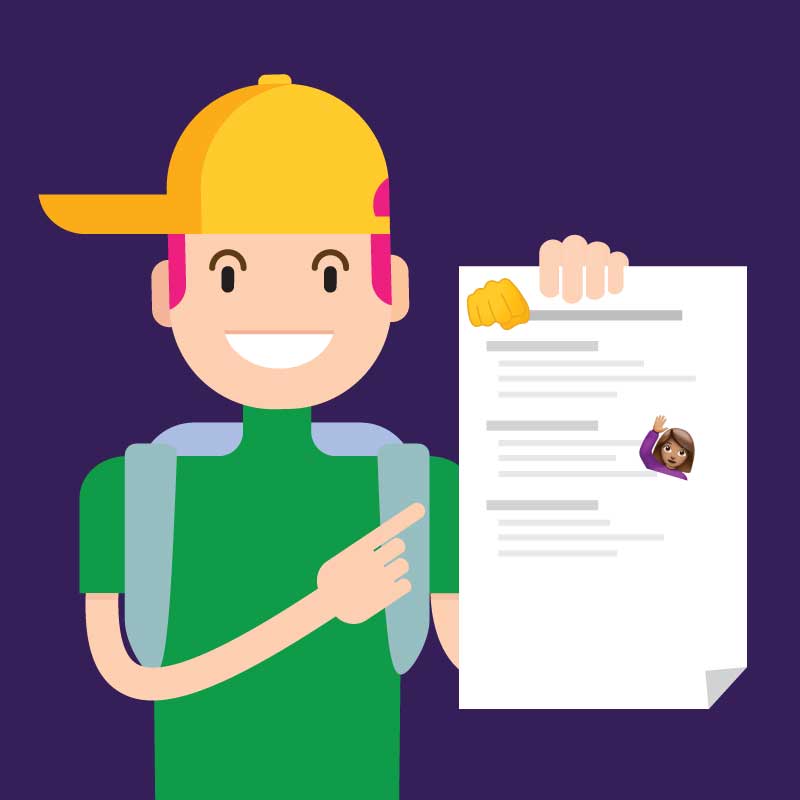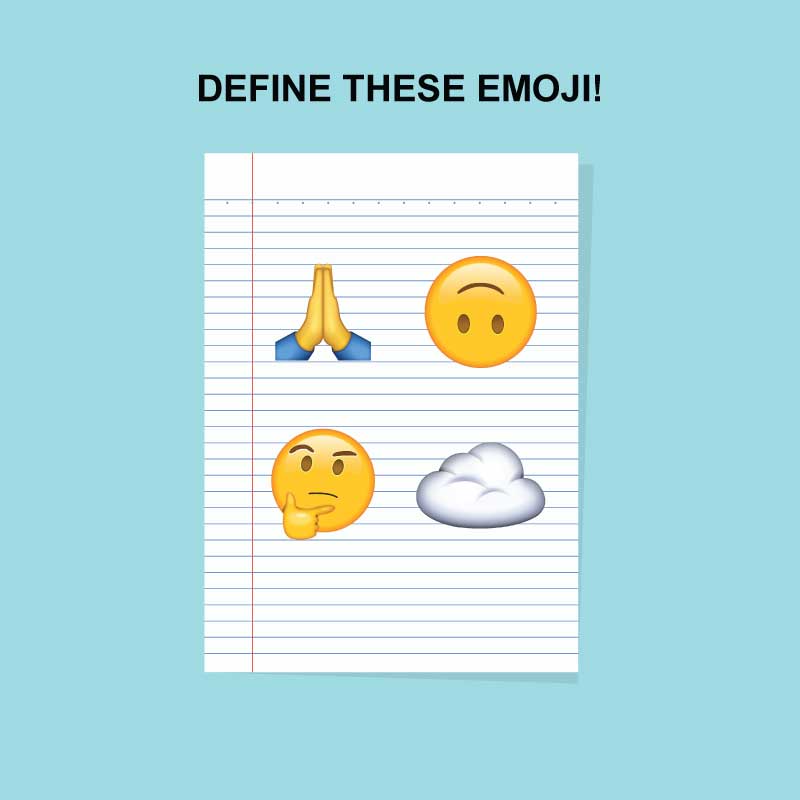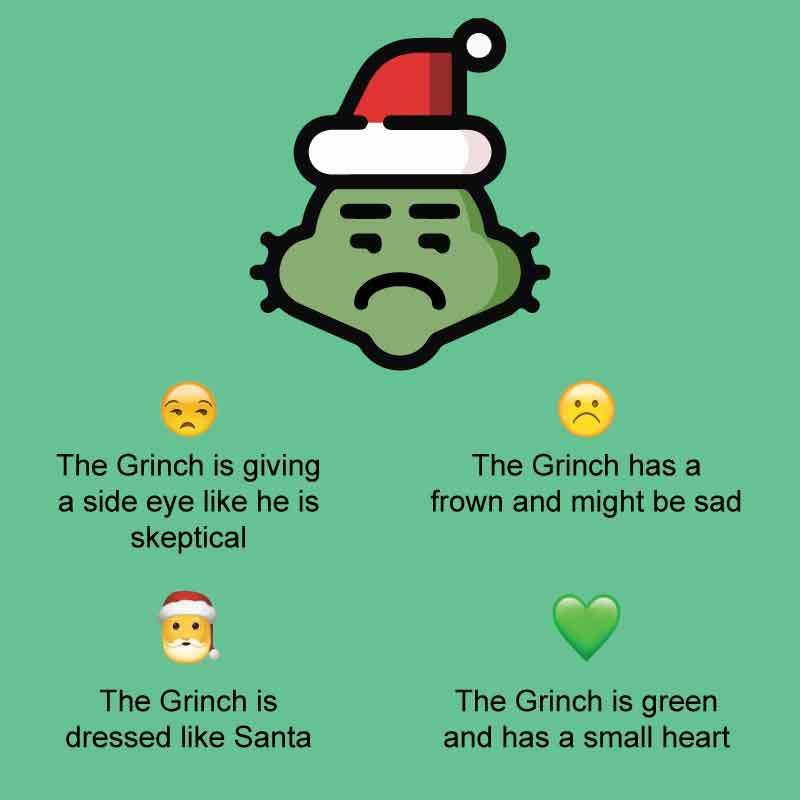Some young people may find it hard to believe, but there was once a world without emoji (the plural can be either emoji or emojis—take your pick). These bright, little, expressive images didn’t come into existence until 1999, when the first ones were created by Japanese artist Shigetaka Kurita.
Today, there are more than 3,000 emoji … and counting. They add a pop of personality to ordinary emails and add nuance to traditional texts. They keep things light, they make us laugh, they help us express ourselves—and kids love them. In many ways, they’re a visual language in themselves.
Because they’re such a big part of our digital world today, there’s a case to be made that they should be used in the classroom as well. While some educators may cringe and cry out that emoji and textspeak are the downfall of the English language, there are many ways emoji can be incorporated in the classroom to help kids learn more effectively and actually enhance the English language.
Every classroom is different, but emoji—which are essentially pictures that can stand in for emotions and ideas—are just another twist on techniques that teachers have been using for a long time, such as rebuses and feeling charts. Here are some ways educators may be able to incorporate emoji into the classroom.
For young kids
Not every classroom has equal access to technology. In spaces where students have laptops or tablets, it can be easy to use emoji during the lesson or as part of an assignment. If your classroom doesn’t have these tools, you can still use emoji by incorporating them into worksheets, using them on classroom decorations, or creating laminated cards with the emoji you want to use on them.
Explaining feelings
It can be difficult for children to express how they’re feeling, and emoji can be a great place to start, especially for younger children. They can select an emoji that reminds them of how they’re feeling, and adults can then help them find words that may correlate.
For example, if they’re confused about a lesson, the confused face emoji 😕 may speak to them, or they may be feeling 😱 (face screaming in fear emoji) about an upcoming test.
Communicating with classmates
When it comes to squabbles in the classroom or on the playground, emoji can help mediate the situations by helping kids understand what others may be feeling and cultivating empathy.
A teacher might ask a child how they think the other person is feeling and have them select an emoji, then discuss why and talk through possible ways to remedy the situation. If an apology is necessary, they may be able to craft one using emoji like 👍👌☮ (thumbs up, OK hand, and peace symbol emoji).
Learning to give constructive criticism
The standard foil gold star is a classroom staple, but it lacks emotion. Emoji, however, can be used to provide more nuance. For example, some kids may find an 👊 (oncoming fist emoji) much more encouraging than a simple star, and this friendly emoji 🙋 (person raising hand emoji) can replace the glaring red question mark, delivering the point with a bit of personality.
For older kids
Practicing warm-ups and wrap-ups
Every experienced teacher knows that warm-up questions can set the tone and prep students for the entire lesson—but you don’t want your warm-up to take too long. That’s where emoji shorthand can come in handy.
A warm-up is a good opportunity to access prior knowledge about the lesson topic. There are a couple of ways you can do this using emoji. For example, you could show a collection of emoji and ask students to write or discuss a response to this prompt: “These emoji represent the topic of today’s lesson. What do you think it is and why?” Alternatively, you can give students the lesson topic and have them pick three or four emoji they feel represent the topic. Have them explain their answer choices.
At the end of the lesson, emoji can be helpful in a wrap-up. A wrap-up or exit ticket is a good way to make sure students understood all the information. You can give students a selection of emotion emoji, including 😀 (grinning face emoji), 🤓 (nerd face emoji), and 😢 (crying face emoji) and ask them to select the one that best shows how they feel about the lesson.
Building vocabulary
Emoji are a pictorial language. This provides some helpful opportunities for building vocabulary and close reading skills. What an emoji means to one person isn’t always the same as what it means to another (a peach emoji 🍑 is most certainly not always a peach). Discussing those differences and finding the words that represent them for each individual can be a helpful way to build vocabulary and talk about synonyms and antonyms.
Emoji also present an opportunity for analysis and vocabulary practice. Provide students with an emoji that can have an ambiguous meaning, like the folded hands emoji 🙏 or the upside-down face emoji 🙃. Have students write an explanation of the various meanings these emoji could have. You might want to provide students with a target number of meanings, like three or four.
Writing stories
Emoji can help kids write expressively too. Being able to use an emoji to add color and personality to their prose can help them write freely. Rebus stories have been used for years to help kids learn to read and write, and emoji simply give them a modern twist. To help guide students, you might want to provide a “word bank” of emoji to use in their stories.
Even if students just use emoji on a first draft to get their thoughts down, they can then use the final draft to find the right words that correspond. Emoji may also serve as good writing prompts.
Another fun way to use emoji in a narrative writing activity is to give students a collection of random emoji. Then, have them write a story incorporating those elements. Use a widget to generate three random emoji for students to use in telling a story.
Summarizing and analyzing text
Getting and keeping kids’ attention is key to learning, so speaking to them in “their” language can help engage them. Using emoji can break down complicated lessons or bring to life literature that may seem worlds away.
Emoji are also a great way for students of all ages to quickly generate summaries, annotations, and analyses of texts. There are a few ways you could do this in your classroom. Here are just a couple of examples:
- Create a summary of the text using emoji (eg. 🐛 🍃 💤 🦋—bug, leaf fluttering in wind, zzz, and butterfly emoji—for The Very Hungry Caterpillar).
- Annotate the text using an emoji code. Instruct the students to put a 😀 at every point in the text where the protagonist gets what they want. Put a collision emoji 💥 every time they encounter a conflict. Use a face emoji every time a new character is introduced.
- Use emoji to explain how a character is feeling and acting at a certain point in the story.
For educators
In an article for Edutopia, teacher Marissa King wrote: “Teachers don’t need to be emoji experts to use them in the classroom. After all, emoji use is constantly evolving, so it’s almost impossible to know every emoji. My students almost always know more about emoji use than I do, but that knowledge gap offers real opportunities. My questions are genuine. I can press at the edges of explanations and spot inconsistencies. When students explain how an emoji’s context impacts the meaning, I’m listening to learn.”
They can also help teachers better relate to students. One study found that college educators who communicate with emoji are “overall perceived as warmer, more likely to receive a positive evaluation and will be more influential with students.”
Providing feedback
Using emoji is also a way to provide accessible feedback in the classroom. Teachers have been putting smiley and frowny faces on student work for decades. Emoji just offer a more nuanced way to do the same thing.
As an educator, you can use an emoji system to provide feedback on work, graded or otherwise. You might choose to use a system like 😊 😐 ☹ to indicate good (smiling face emoji), satisfactory (neutral face emoji), and needs improvement (slightly frowning face emoji). Or, you can throw students a curveball like the thinking face emoji 🤔 to really get them talking.
Digital communication is vital to our daily lives today, and embracing the languages used within it and incorporating them into education can be powerful tools. Rather than looking at emoji as the downfall of the English language, we should look at them as a way to build learning of it and a tool to teach other concepts.
These suggestions only scrape the surface of the variety of ways emoji can be used in the classroom. We haven’t even touched on how these tools might be particularly useful in English as a Foreign Language or other language-learning classrooms, for example.
Do you use emoji with your students in a different way we didn’t cover here? Let us know! We’re all 👂. (That’s the ear emoji—but you know that.)

















